by Ma. Shara Micah Oliquino, UPRI-Education Division

On July 18, 2025, the Education Division wrapped up the second and final batch of the 2025 UP Resilience Institute (UP RI) Internship Program. A total of 61 interns across the different divisions of UP RI presented their accomplishments and key takeaways related to the project engagements assigned to them during their month-long stay in the institute.
The presentation proper started with interns from the Institution Building (IB) division, composed of undergraduate students specializing in Applied Mathematics and Civil Engineering. Some of the unit’s projects and activities that these students participated in were the National Simultaneous Earthquake Drill (NSED), Bomb Threat Drill and Orientation, and improvement of UP RI’s Time-based Observation Tool and Rapid Assessment Checklist and Initial Inspection Tool.
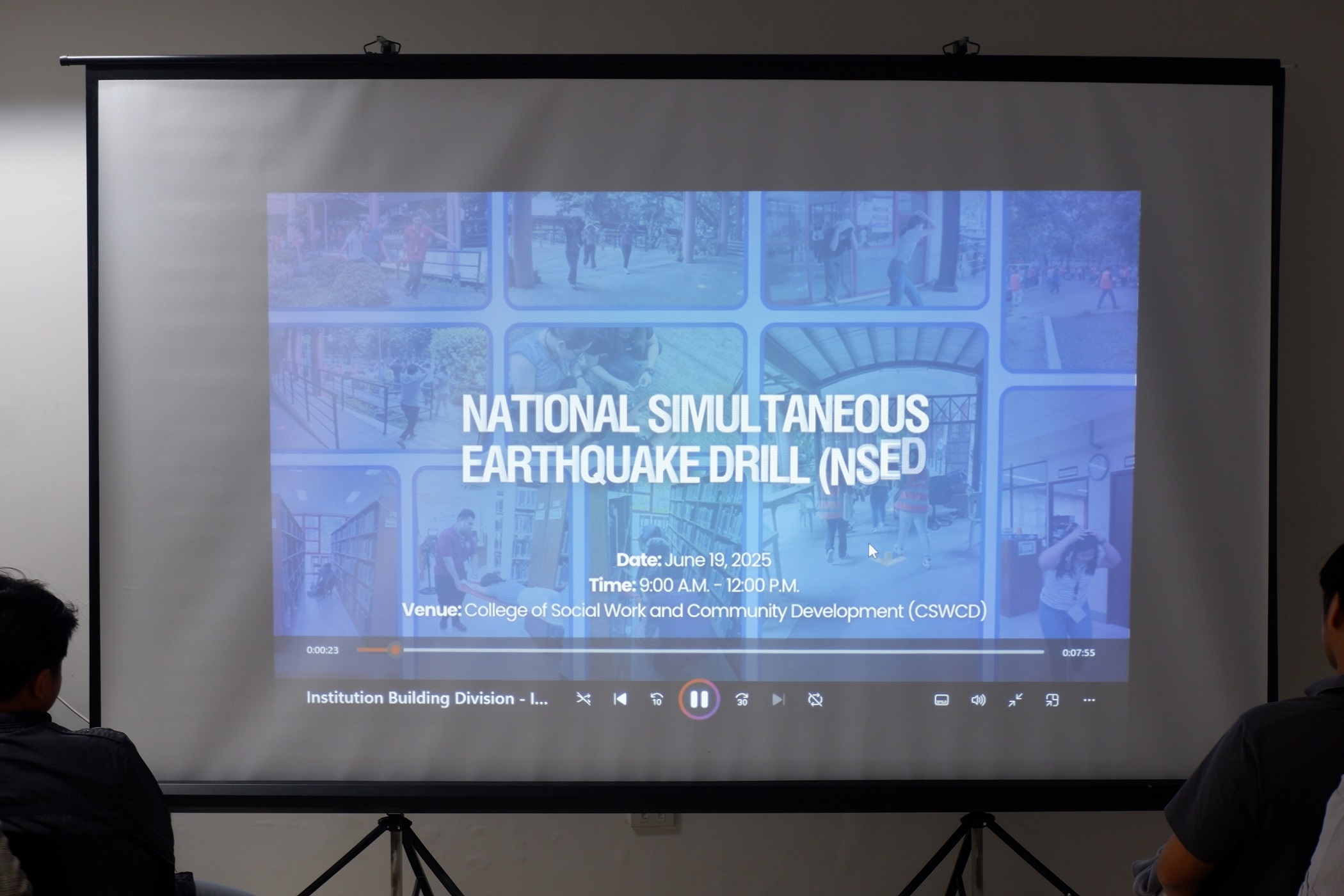
According to the IB interns, the internship experience provided them with both technical skills in disaster response and soft skills such as strengthened analytical, writing, and communication skills useful for their professional careers. They added that working collaboratively in understanding and strengthening the dynamics of disaster response requires effective communication and further familiarity with DRRM terminologies.
During the NSED and Bomb Threat and Drill Orientation, the IB interns gained simulated hands-on experiences in evaluating emergency preparedness plans and disaster response systems of responders to high-risk events such as earthquakes and bomb threats. They were given the opportunity to assess the mobilization and coordination of responders throughout the course of disaster—e.g. level of preparation and instructional understanding of protocols prior to a disaster, during a disaster, and its aftermath. Furthermore, using the theoretical foundations from their specializations, they were able to provide insights and recommendations into the improvement of UP RI’s Observation Tool and the Rapid Assessment Checklist and Initial Inspection Tool. For instance, drawing on their knowledge in Applied Mathematics, they developed an enhanced time-based casualty management framework to identify casualty flow during disasters.
For the Research and Creative Works (RCW) division, this year’s second batch of interns made up a diverse set of students from various fields of study—i.e., Forestry, Computer Science, Sociology, Philosophy, Communication Research, Human Ecology, Public Administration, Speech Communication, and Political Science. According to them, these diverse backgrounds contributed to the enrichment of their insights as they work towards completing their assignments.
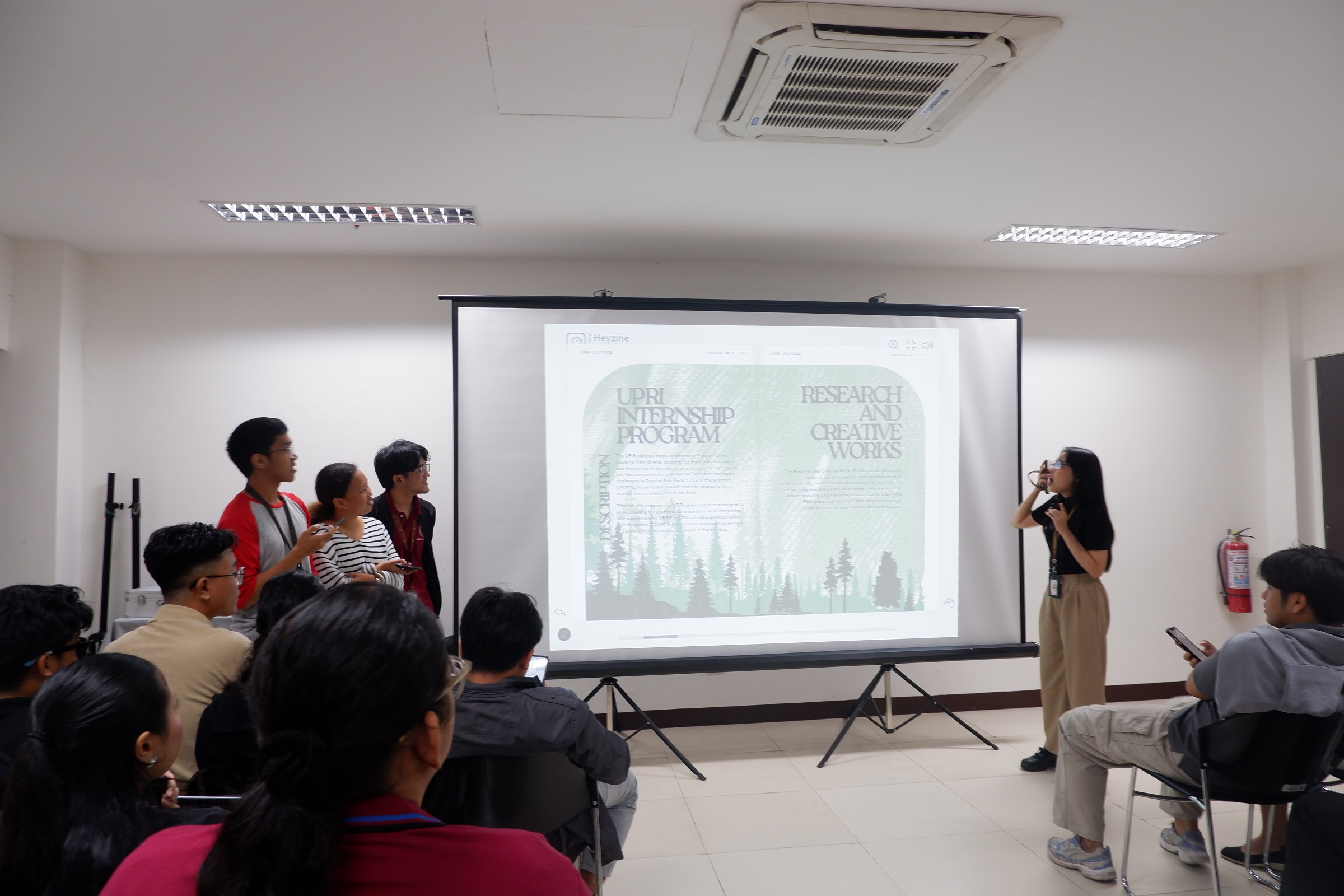
The RCW interns presented their learnings and reflections from the following projects they contributed to—Project Tanim, AHA Handaan Na!, RURBANISE, and Project CORD, which stands for Center for Climate and Health Global Research on Disasters. They had the opportunity to participate in the research work, logistics, preparation, and design aspects of each of these project undertakings. They gained institutional awareness on the various local policies that recognize the importance and rights of workers, alternative healthcare systems, climate change adaptation, and disaster risk reduction. For example, in Project Tanim, they delved deeper into the situation of Agta communities in remote areas in Bicol, where they found that the communities still depend on herbal treatment. Overall, their internship experience was more than an academic task, they expressed. It has provided them clearer insights into the research and developmental work of resilience.
Education division interns composed of students majoring in Multimedia, Education, Business Administration, and Management studies. They were given the opportunity to help in the secretariat aspects of the formal and non-formal academic programs facilitated by the unit. The programs they participated in were the assessment of Basics of Resilience Massive Open Online Courses (MOOCs) and the sponsorships for the upcoming Philippine Academic Society for Climate and Disaster Resilience (PASCDR) conference.
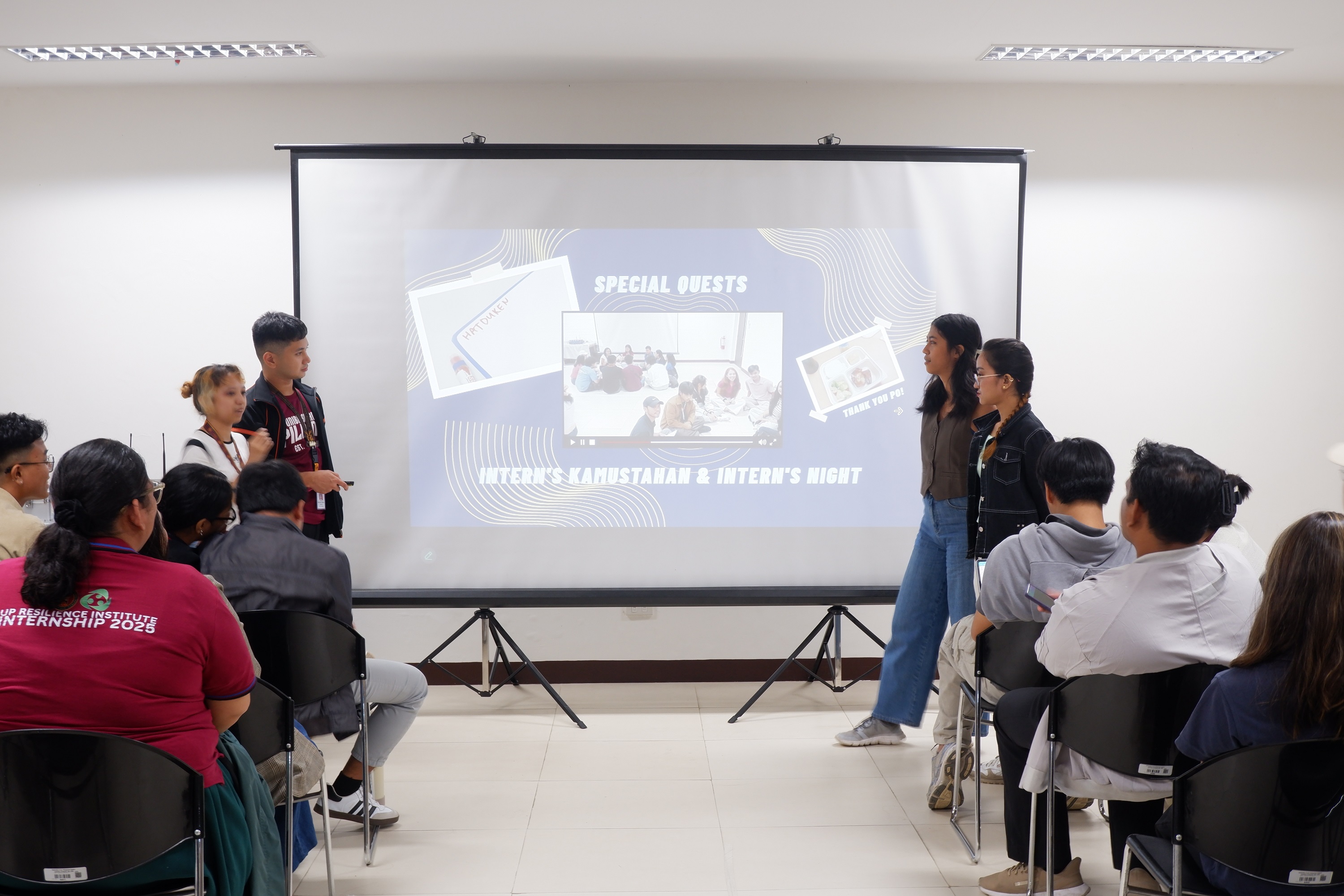
The Education interns were given the opportunity to review the structure of the Basics of Resilience MOOCs 3 and 4, and analyze the demographics and feedback of the participating learners. In addition, they were also exposed to the behind-the-scenes of partnering with various stakeholders for DRRM-CCA advocacy by sending out invitations to and offering sponsorship packages to media outlets, local government units, private institutions, and non-profit organizations. In particular for the Basics of Resilience MOOCs, they realized the importance of leveraging the power of technology to teach resilience to people in far-flung areas.
Interns from the Knowledge Sharing (KS) division consisted of undergraduate students studying Biology, Development Communication, Human Ecology, and Sociology. They were joined by one senior high school student from the Science Technology and Engineering track. Together, they worked on various projects that aim to communicate disaster risk reduction to young learners.
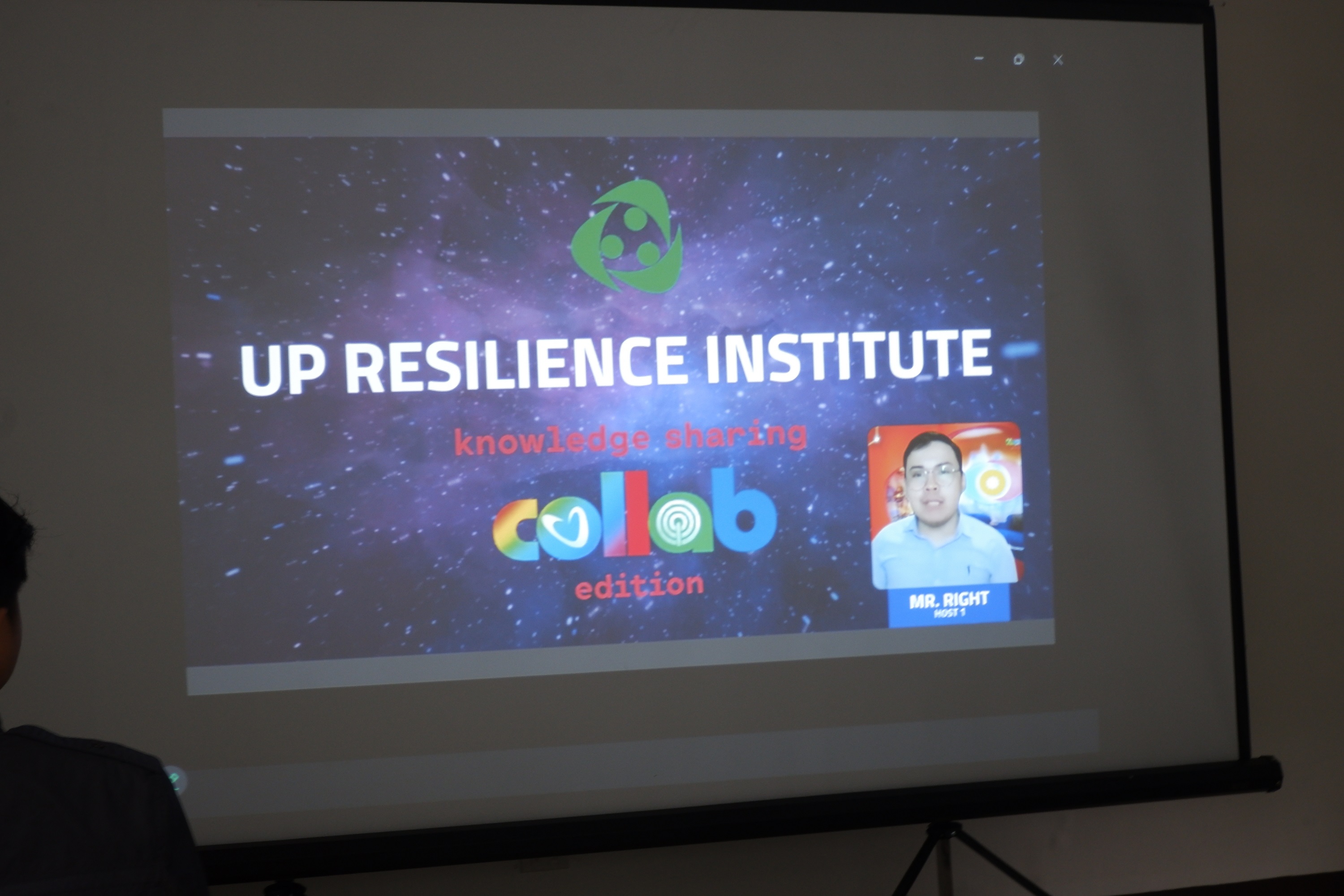
The KS interns took part in contributing to the Katatagan glossary and Geohazard databases of UP RI. They translated DRRM terms into various local languages in the Philippines, which were stored in these databases for everyone’s references. They also conceptualized card games, which they named as Kapit-Bisig and Ready, Set, Handa!, targeting children’s enhanced literacy in disaster risk reduction and management. They expressed their difficulties encountered in looking for literature for their translation tasks, and reflected on their overall project coordination skills gained from the internship program.
NOAH Center interns also had the chance to see and experience what kind of projects and programs each sub-component under this division offers for them in terms of advancing disaster science research and multidisciplinary assessment of hazards.
The second batch of NOAH-Hazard Assessment Team (NOAH-HAT) interns, specializing in Geology, Civil Engineering, and Environmental Science, showcased their accomplishments through a series of technical tasks. These included the preparation of Hazard Assessment Reports, Debris Flow Mapping, InSAR training, Volcano Monitoring, and MORLVOC training. Throughout their engagement, the interns gained valuable insights into the application of specialized software and advanced techniques for identifying, analyzing, and mitigating risks associated with natural hazards.
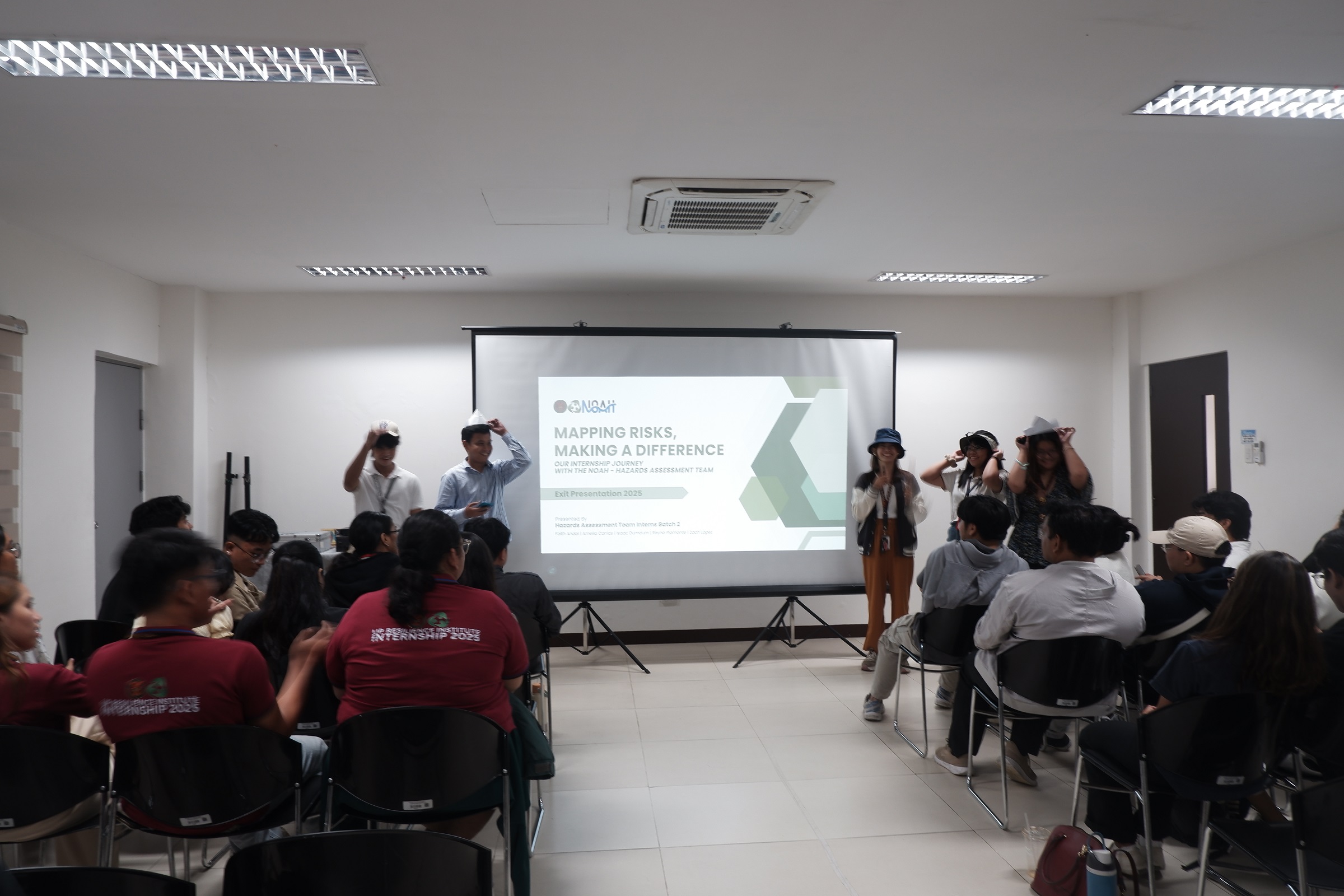
NOAH-HAT interns were assigned to create hazard maps of their assigned municipality in the Philippines using Geographic Information System (GIS) tools like ArcGIS and Google Earth Pro, or secondary databases from NOAH, PAG-ASA, and Phivolcs. They were given a glimpse of how they could apply the learnings from their programs toward dealing with work related to hazard assessment. As they stated, their Morlvoc training, for instance, would be helpful to them as future geologists wanting to explore the form and structure of volcanoes without necessarily going out in the field.
Interns from the NOAH-Flood Modelling Component (NOAH-FMC), consisting of students from the Applied Physics, Civil Engineering, and Geography programs, worked on projects that aim to understand rainwater flow and use these data to model flood and identify level of flood hazards in their residential areas.
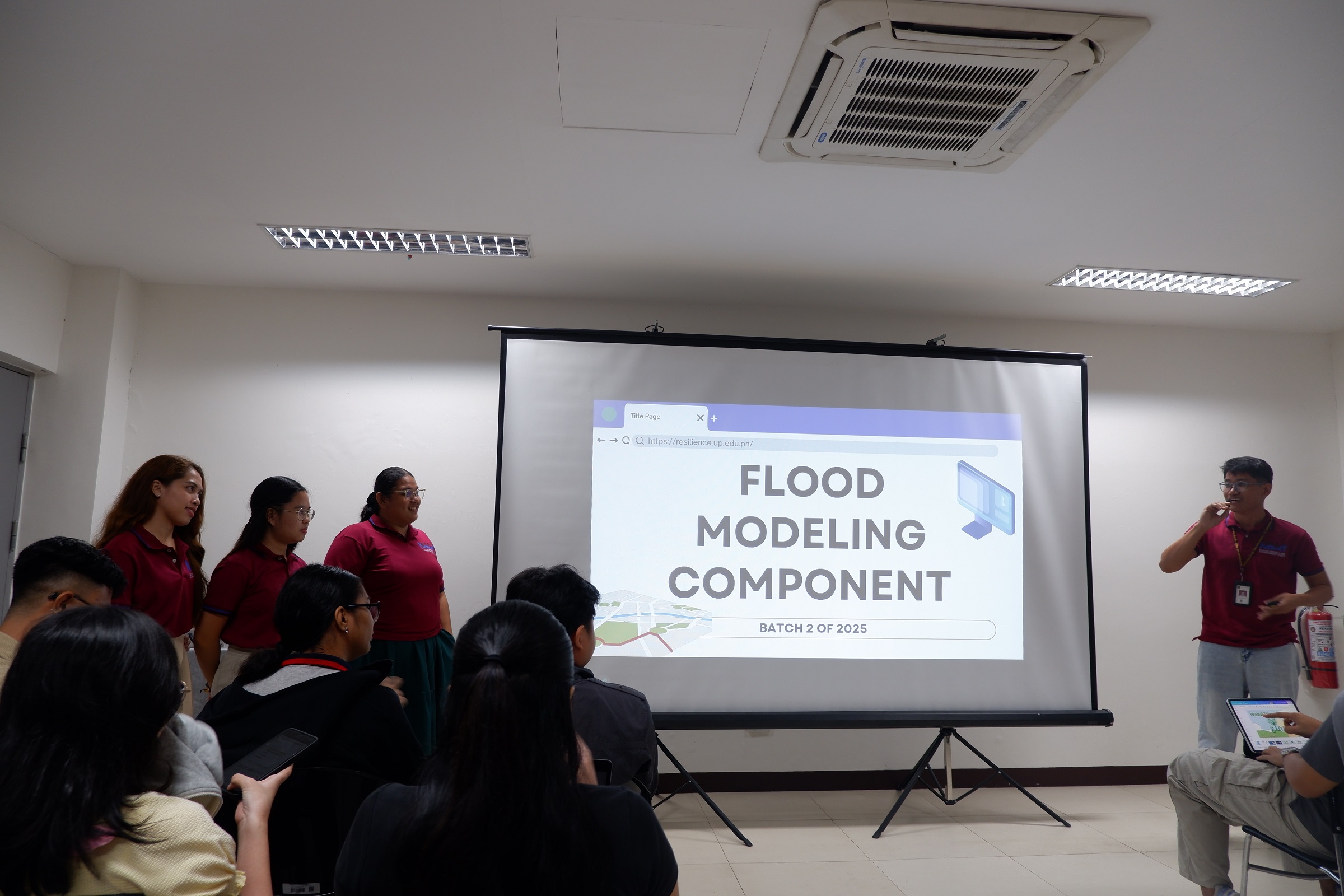
Drawing on the foundation from their programs and training from their immediate supervisors, they managed to define and edit large streams and catchment using the same software tools used by the NOAH-HAT interns. For instance, they were able to produce a map layout visualizing the flood hazard in Quezon City throughout a span of 25-year rain return period. Their experience at UP RI further sparked their scientific curiosity to use their knowledge in the continued pursuit of flood mitigation.
The NOAH-Planning Component (NOAH-Planning) interns, coming from the Political Science, Public Administration, Human Ecology, and Geography programs, contributed to the collation, analysis, and synthesis of fire incidence in Quezon City from 2014 to 2025. They emphasized the importance of data-driven and risk-informed analysis in planning for future hazards and in capacitating local government units to develop initiatives where resilience is at the core of planning.
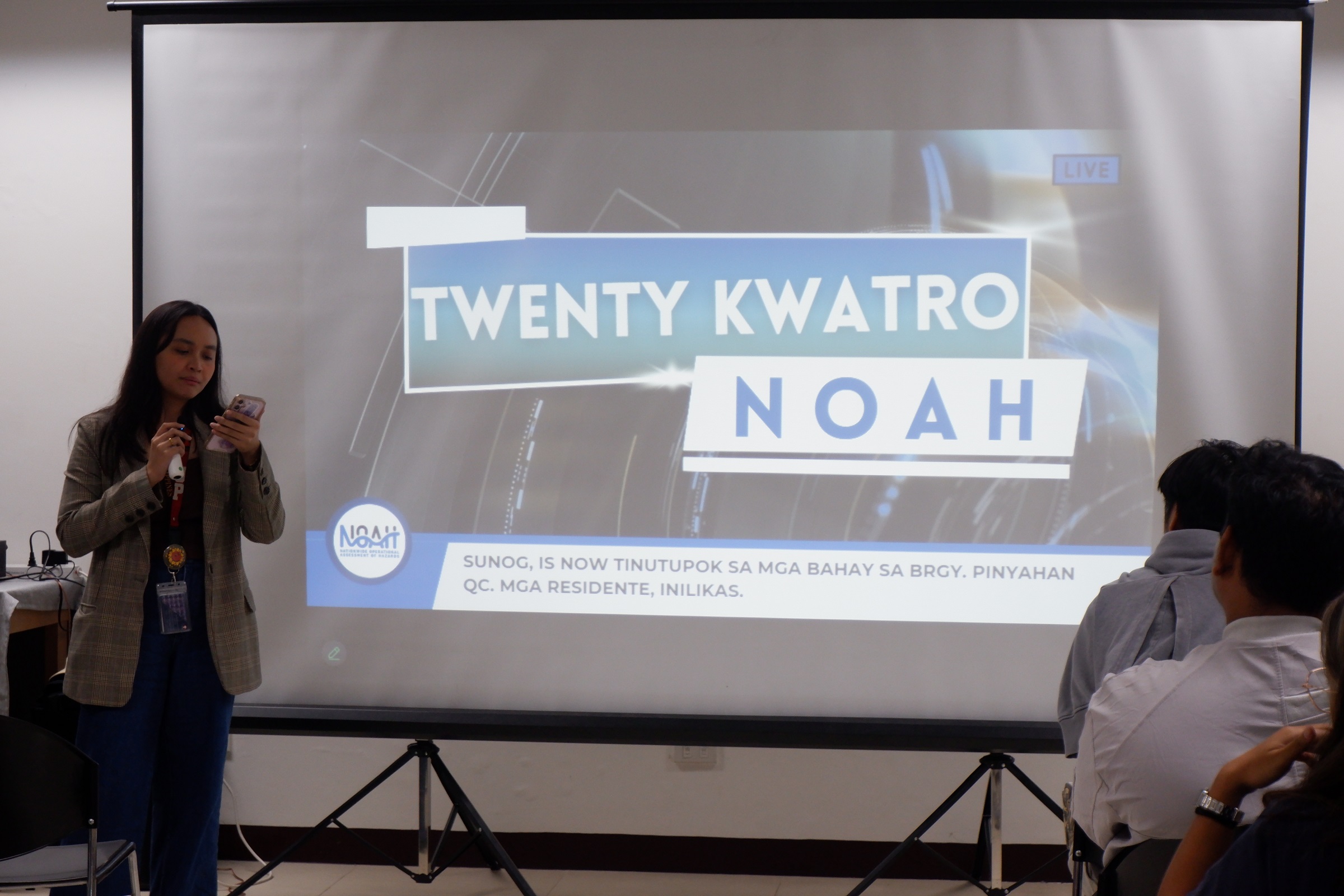
Coding, research, writing, and work ethics were some of the soft skills they have gained from the internship, significant to their professional careers as prospective DRRM-CCA practitioners. They also became more aware of how disaster risk reduction is a public thrust, and at all times, the constituency should be involved in the planning of its programs as well.
Lastly, completing this year’s roll of interns are BS Computer Science and Engineering students, assigned to the NOAH-WebGIS component. They engaged with website development and support for the NOAH and GINA (Grow INdigenous Trees in your Area) applications of UP RI.
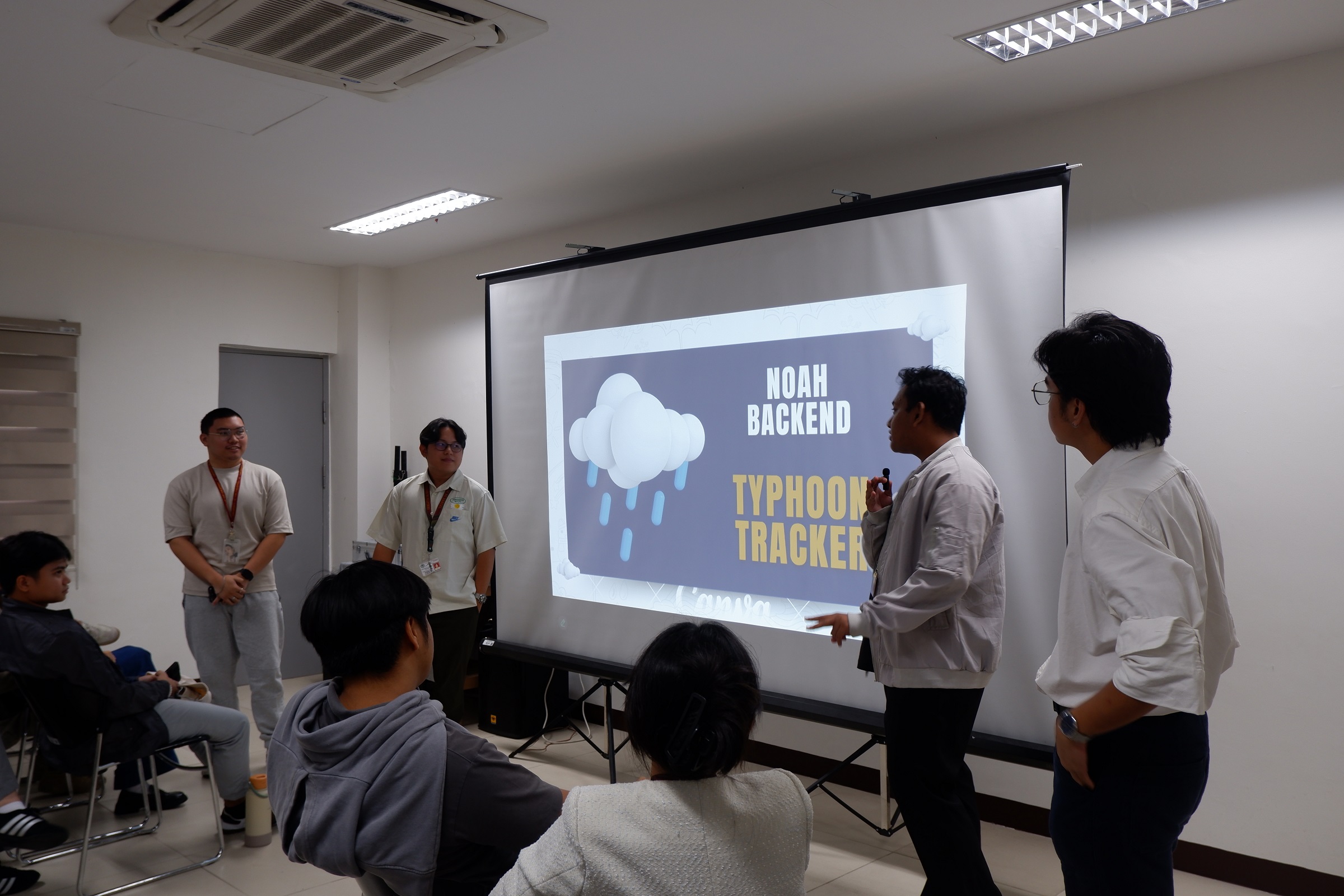
Through their internship training, the NOAH-WebGIS interns sharpened their foundation in computing. Their assigned tasks were mainly involved in the improvement of interface and functionalities of the NOAH and GINA applications. Different teams provided inputs on how they can make these applications more efficient, accessible, and user-friendly for the people. The interns attempted to tweak and simplify some components of these applications. For instance, for the GINA application, the second batch of interns minimized the elements while including basic graphic design of a certain page of the app so that users could get a more seamless experience in viewing their planted trees.
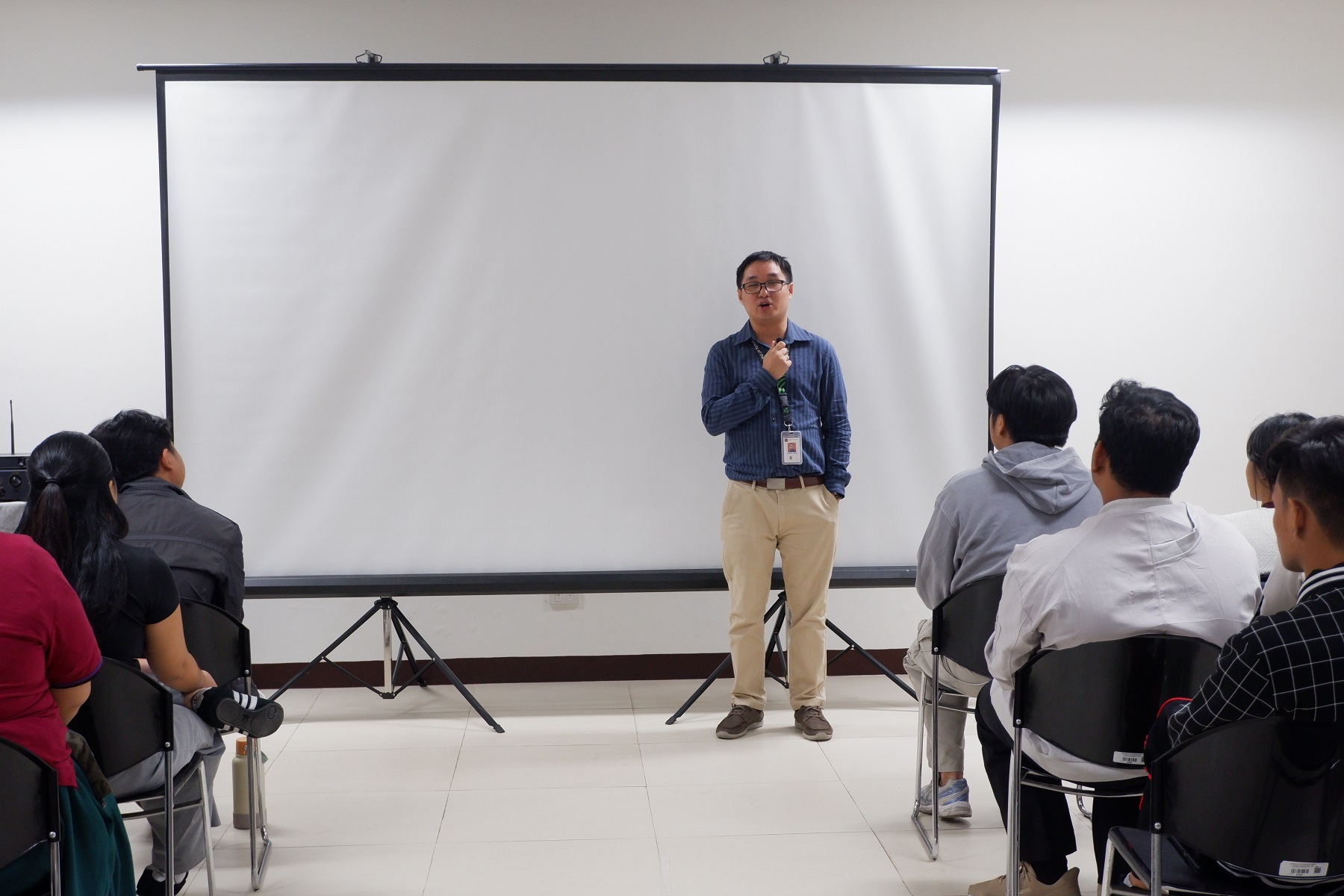
The internship culmination program ended with closing remarks from the UP RI Education division Officer-in-Charge Mr. Richard Ybañez. He congratulated and thanked the interns from all of the divisions for a job well done in performing their duties and responsibilities, contributing to the advocacy of UP RI in creating a more resilient University of the Philippines thereby extending its influence to communities beyond the institution. He stressed the diversified work of DRR-CCA at UP RI, and how each of these plays a crucial role in contributing to different types of knowledge in resilience work. On behalf of UP RI, he encouraged the interns to take to heart what they have learned from this internship program as they step outside and practice their respective professions in due time.
